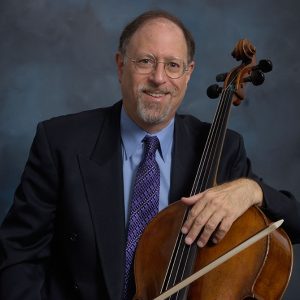
100 Cello Warm-Ups and Exercises Blog 2: Introduction
Robert Jesselson
What is the very first thing that you do before you actually start playing the cello on any given day? Do you have certain habits or “ceremonies” when you take the cello out of its case – do you dust it off, or look for cracks, or check the bridge? Do you always take the bow out of the case first by habit, or do you remove the cello first? Do you do any stretching to warm up your body? Then when you actually start playing, do you plunge into the piece you are working on, or do you first do some scales and arpeggios? Or perhaps do you have some little exercises to help you warm up, focus and get started?
Maybe you haven’t consciously thought about what you do in the beginning of your practice session – but it is worth some time and consideration because it might affect how effective your practicing will be.
This Blog will address various issues related to warming up and preparing to play – essentially examining what we do in the first 5-10 minutes of our practice sessions. That means not only healthy stretches to warm up the body, but various mini-exercises which engage the brain and the body as we prepare to focus on the day’s work. These exercises are like the hors d’oerves before a meal. They are “bite-sized” delicacies that help to prepare for the main course by gently tantalizing and stimulating us with the possibilities of the upcoming meal. For cellists, these warm-ups can help to take us out of the hustle and bustle of the day and bring us into our “cello world” in which we are focused, concentrated, relaxed and ready to learn.
Everyone is different – our bodies are different, our brains are wired differently, and we have various approaches to playing the cello. A friend of mine who is a professional violinist in a major symphony orchestra says that he needs a half-hour to warm up before the orchestra rehearsal starts. Otherwise he couldn’t function. Other people seem to be able to dive in right away without any problem. I remember a morning master class with Paul Tortelier in Nice. He walked in and said he needed to warm-up before the class started. He then plunged right in playing two minutes of the fastest four-octave scales I have ever seen in my life – and that was it. He was ready.
Since most of us are not Paul Tortelier, I think we probably fall somewhere between those two extremes. Some people like to start the day by playing open strings, calmly paying attention to the sound, the bow angle, the placement of the elbow and the arm, etc. Other people like to play a short melody, or to improvise a little before starting to practice. A clarinetist friend has a consistent warm-up melody that he plays when he first puts the instrument together – he didn’t even realize that he was doing this, but when a composer friend of ours wrote a piece dedicated to him, he used that little melody as the theme since he had always associated that melody with the clarinetist. I often warm up on a little melody that my grandmother sang to me starting at birth – she created a different melody for each of her grandchildren, and mine has stayed with me all these years! It has become a tiny warm-up “ceremony” that I do almost sub-consciously.
Casals used to say that every day he needed to “find first position”. He did it by comparing the first finger on the D-string (an E) with the open A string (getting a perfect 4th), and the fourth finger on the D-string (a G) with the open G string. In other words, the first finger with the string above, and the fourth finger with the string below. I tell my students, that if it was good enough for Casals to do every day, then it is good enough for me to do, and it should be good enough for them. When students do it before they start the lesson, they listen more carefully to their intonation, and everything that follows is more in tune. This little exercise focuses their attention.
This Blog is not intended to be a “method” book, and it certainly is not intended to replace a teacher. It is offered for students, amateurs, teachers, and professional cellists who are exploring the cello and interested in their own self-improvement. I hope that young cellists who are working on a particular technical issue will find it interesting, as well as advanced players who want to re-examine some aspect of their playing.
Next Monday’s blog will present various stretches that are appropriate for warming up the body (and cooling down) before and after playing, including some Anti-Tendonitis stretches that can help prevent injury.
Subjects: Practicing, Technique
